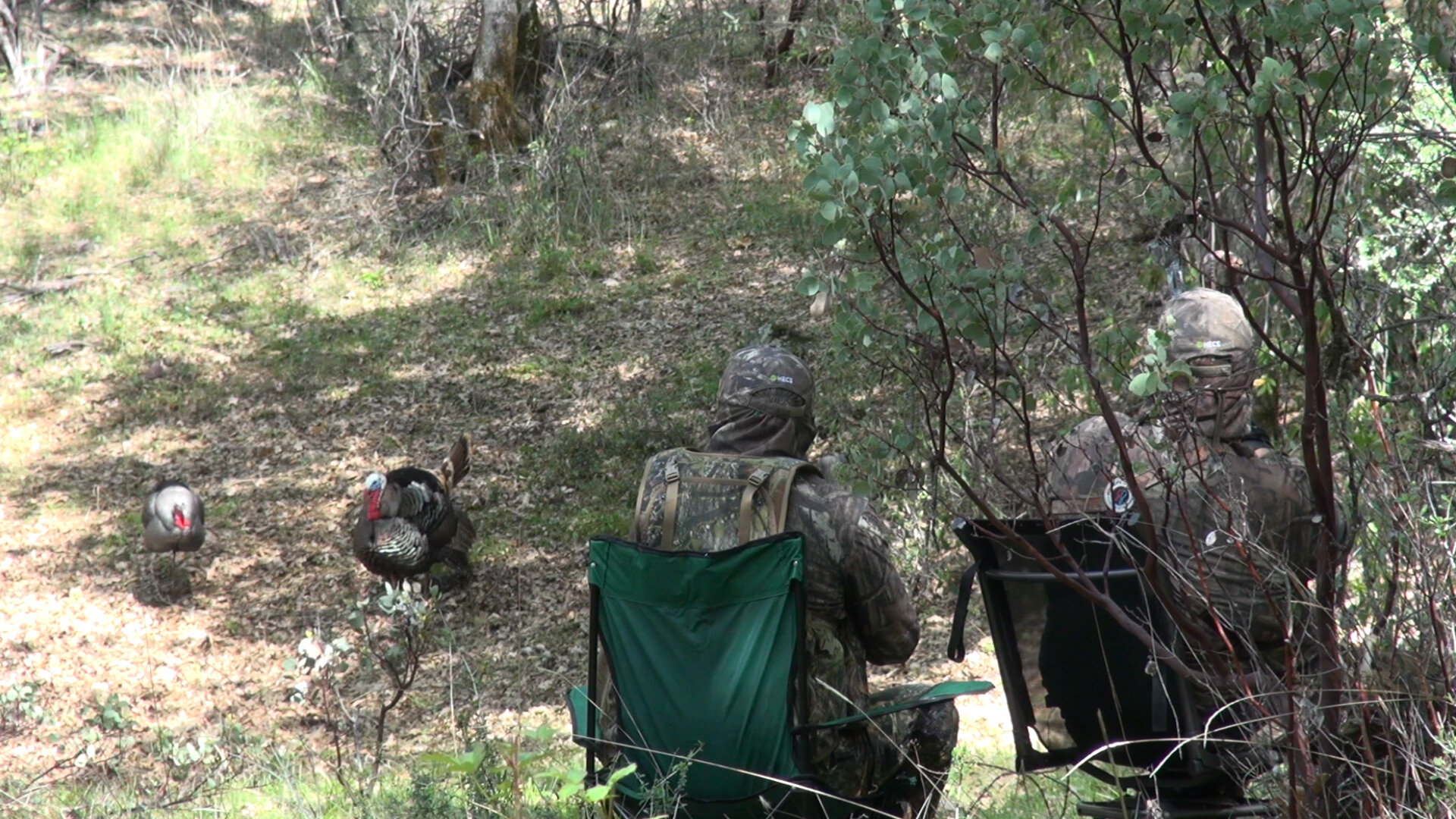HECS Technology - A Gamechanger in Concealment
It’s a warm spring morning. You’ve been sitting motionless in the grass for a couple hours working your turkey calls to no avail. Your back and rear are sore from remaining in the same position, so you shift your weight just a little bit to get the blood flowing again when a tom’s call breaks the silence.
And it’s close.
You freeze and gently reply with your call. Silence. Then, some movement ahead in the grass. The tom is strutting right toward you and your decoys.
You slowly put down the call and begin to raise your gun as the tom checks out the decoys. His head is turned away from you, it’s game over for him. Inch by inch you bring the shotgun up to your eye. But just before the butt is firmly in your shoulder, the tom abruptly looks in your direction. Cursing under your breath, you slow your movements down even more so they are barely perceptible. But it’s not enough, the tom blows out and runs. Out of pure adrenaline you don’t even feel the gun’s kicks as it sends number 4 shot sailing over the fleeing turkey’s head.
The quiet returns.
And so does your back-ache.
Sounds familiar, doesn’t it? Sometimes, even in the most ideal conditions, animals just seem to have a sixth sense, some innate awareness of a human’s presence. And for centuries that’s all it seemed to be. “There’s just some side of an animal’s senses that we’ll never understand,” they’d say.
Until now.
In 2006, Mike Slinkard, an avid hunter from Eastern Oregon, gathered a team of researchers to study that “mystery sense” that has frustrated outdoor enthusiasts for millennia. After years of research and tests, they discovered that the old-timers weren’t so wrong after all, that animals really do have a sixth sense, what biologists have referred to as their inner compass. In short, they are attuned to the electromagnetic field of the earth, allowing them to orient themselves and migrate accordingly. This is how migratory birds follow the same flight path every year with the changing of the seasons. This sensitivity to electromagnetic fields is also well-known among many species of fish; sharks, most famously.
Mike Slinkard and his team soon discovered that the electromagnetic field of the earth that animals are so in-tune with is also produced by living beings. Namely, your muscle movement and heartbeat. Overjoyed, Slinkard and his team used their findings to create the HECS Stealthscreen, a clothing technology that uses the Faraday Cage Principle to trap electric signals within itself, blocking those signals from any animals nearby that might detect them.
Courtesy of HECS Technology | 2020
Though controversial upon its debut, HECS Technology has been widely embraced by the scientific community as a groundbreaking tool for studying animals in their natural habitat. World-renowned biologist Forrest Galante is one of the biggest proponents of HECS Technology, saying that “it reduces stress on the environment and the animals that live in it.”
“Especially with birds, I’ve noticed a huge difference...it helps me get closer.””
HECS Technology has created several garments for conservationists, wetsuits for divers and spearfishers, and, most interestingly to us, camouflage for hunters. Many stories have surfaced of turkey and deer hunters having birds land on their gun or raccoons walking right by them without a care in the world due to the concealment provided by the HECS Stealthscreen.
Courtesy of HECS Technology | 2020
With turkey season just around the corner, the HECS Stealthscreen gives hunters an advantage that will allow them to get closer to a game bird notorious for having incredible senses all around. Check out their website here to see their full array of products so that you, too, can have the upperhand this season. And make sure to check out our new show Hunting With HECS on Waypoint. Watch first full episode below.















